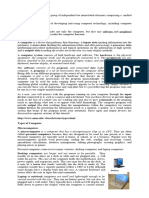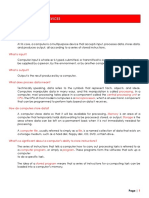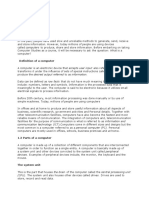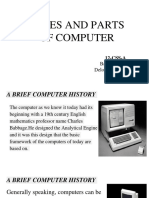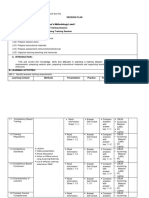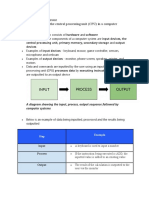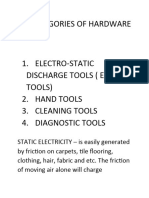0% found this document useful (0 votes)
7 views16 pagesAISPC106 Topic 2 Basics in Computing
The document provides an overview of computers, defining them as electronic devices that process data and perform tasks based on programs. It outlines key characteristics, basic functions, and various types of computers, including supercomputers, mainframes, minicomputers, microcomputers, personal computers, workstations, servers, and embedded computers, along with their uses. Each type is described in terms of its capabilities and typical applications in different fields.
Uploaded by
delasernalysaCopyright
© © All Rights Reserved
We take content rights seriously. If you suspect this is your content, claim it here.
Available Formats
Download as PDF, TXT or read online on Scribd
0% found this document useful (0 votes)
7 views16 pagesAISPC106 Topic 2 Basics in Computing
The document provides an overview of computers, defining them as electronic devices that process data and perform tasks based on programs. It outlines key characteristics, basic functions, and various types of computers, including supercomputers, mainframes, minicomputers, microcomputers, personal computers, workstations, servers, and embedded computers, along with their uses. Each type is described in terms of its capabilities and typical applications in different fields.
Uploaded by
delasernalysaCopyright
© © All Rights Reserved
We take content rights seriously. If you suspect this is your content, claim it here.
Available Formats
Download as PDF, TXT or read online on Scribd
/ 16



